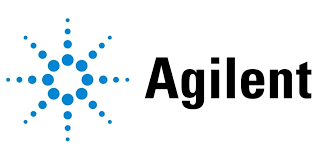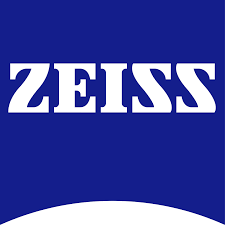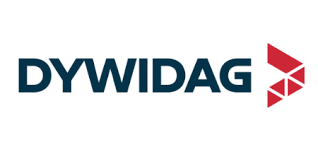Carbon Credits Trading
Published Date: 02 June 2025 | Report Code: carbon-credits-trading
Carbon Credits Trading Market Size, Share, Industry Trends and Forecast to 2033
This report provides a comprehensive overview of the Carbon Credits Trading market, with detailed insights on its growth trajectory, technological advancements, market segments, and regional performance from 2023 to 2033.
| Metric | Value |
|---|---|
| Study Period | 2023 - 2033 |
| 2023 Market Size | $10.00 Billion |
| CAGR (2023-2033) | 8.2% |
| 2033 Market Size | $22.54 Billion |
| Top Companies | South Pole Group, Verra, Gold Standard, EcoAct, Apex Clean Energy |
| Last Modified Date | 02 June 2025 |
Carbon Credits Trading (2023 - 2033)
Carbon Credits Trading Market Overview
Customize Carbon Credits Trading market research report
- ✔ Get in-depth analysis of Carbon Credits Trading market size, growth, and forecasts.
- ✔ Understand Carbon Credits Trading's regional dynamics and industry-specific trends.
- ✔ Identify potential applications, end-user demand, and growth segments in Carbon Credits Trading
What is the Market Size & CAGR of Carbon Credits Trading market in 2023?
Carbon Credits Trading Industry Analysis
Carbon Credits Trading Market Segmentation and Scope
Tell us your focus area and get a customized research report.
Carbon Credits Trading Market Analysis Report by Region
Europe Carbon Credits Trading:
Europe leads the Carbon Credits Trading market with an estimated size of $3.41 billion in 2023, projected to escalate to $7.70 billion by 2033. The EU Emissions Trading System (ETS) remains the most significant carbon market globally, showcasing ambitious emissions reduction targets, fostering innovations in trading mechanisms.Asia Pacific Carbon Credits Trading:
The Asia Pacific region in 2023 holds a market size of $1.72 billion, expected to grow to $3.87 billion by 2033. The region's increasing industrialization and government initiatives aimed at emissions reductions are propelling market demand. Countries like China and India are adopting stringent environmental policies that boost carbon trading activity.North America Carbon Credits Trading:
North America boasts a market size of $3.39 billion in 2023, anticipated to reach $7.64 billion by 2033. The region is characterized by well-established regulatory frameworks, leading technology adoption, and engagement from private sector players, particularly in the U.S. The California cap-and-trade program exemplifies successful carbon market strategies.South America Carbon Credits Trading:
With a 2023 market size of $0.61 billion projected to grow to $1.37 billion in 2033, South America is gaining momentum in carbon credits trading. Key markets, such as Brazil, are pushing for high-impact carbon offsets driven by deforestation and agriculture-related emissions reductions efforts, providing actionable pathways for investments.Middle East & Africa Carbon Credits Trading:
The Middle East and Africa recorded a market size of $0.87 billion in 2023, expected to reach $1.96 billion by 2033. The region is gradually embracing carbon trading frameworks, with emerging opportunities in renewable energy developments and carbon offset projects that will catalyze market growth.Tell us your focus area and get a customized research report.
Carbon Credits Trading Market Analysis By System
Global Carbon Credits Trading Market, By Trading System Market Analysis (2024 - 2033)
The Carbon Credits Trading market can be analyzed based on its trading systems, predominantly divided into compliance and voluntary markets. The compliance market, expected to retain the majority share, reflects regulatory-induced demand, while the voluntary sector fosters environmentally aware corporate initiatives.
Carbon Credits Trading Market Analysis By Type
Global Carbon Credits Trading Market, By Type of Carbon Credit Market Analysis (2024 - 2033)
The segmentation of carbon credits includes Certified Emission Reductions (CERs) and Verified Carbon Units (VCUs). CERs dominate the market, representing 80.17% share and growing from 8.02 billion in size in 2023 to 18.07 billion by 2033, while VCUs contribute 19.83% share, increasing from 1.98 billion to 4.47 billion over the same period.
Carbon Credits Trading Market Analysis By Participant
Global Carbon Credits Trading Market, By Market Participant Market Analysis (2024 - 2033)
Market participants include government entities and private sector participants. Government entities, capturing around 80.17% share, oversee compliance markets and validation processes, while private sectors engage voluntarily, represented by 19.83% share, creating diverse avenues for participation in carbon trading.
Carbon Credits Trading Market Analysis By Technology
Global Carbon Credits Trading Market, By Technology Platform Market Analysis (2024 - 2033)
Technological advancements play a significant role within the Carbon Credits Trading market. Blockchain technology is gaining traction for its potential to enhance transaction transparency and credibility, while digital trading platforms are broadening access and facilitating seamless trading experiences.
Carbon Credits Trading Market Trends and Future Forecast
Tell us your focus area and get a customized research report.
Global Market Leaders and Top Companies in Carbon Credits Trading Industry
South Pole Group:
A leading provider of global sustainability solutions, South Pole Group offers services in carbon credit management and emissions reduction projects, facilitating organizations in their sustainability pathways.Verra:
Verra is a non-profit organization that operates the Verified Carbon Standard (VCS), establishing methodologies and regulations that underpin carbon credits trading, fostering market integrity and trust.Gold Standard:
Gold Standard enables businesses to offset their carbon footprint via high-quality carbon credits while promoting sustainable development goals through its rigorous project certification process.EcoAct:
As a global climate consultancy, EcoAct supports businesses in their carbon management strategies and optimizes their engagement in the carbon credits market.Apex Clean Energy:
Apex Clean Energy focuses on renewable energy project development and facilitates corresponding carbon offsets, contributing to the growth of the voluntary carbon market.We're grateful to work with incredible clients.









FAQs
What is the market size of carbon Credits Trading?
The carbon credits trading market is valued at approximately $10 billion in 2023 and is projected to experience a CAGR of 8.2% through 2033. This robust growth reflects increased demand for environmentally sustainable practices across various industries.
What are the key market players or companies in this carbon Credits Trading industry?
Key players in the carbon credits trading industry include major corporations and financial institutions that facilitate carbon credit transactions. They include organizations that specialize in compliance and voluntary markets, digital trading platforms, and firms focused on blockchain technology.
What are the primary factors driving the growth in the carbon Credits Trading industry?
Growth in carbon credits trading is driven by regulatory compliance, increasing awareness of climate change, demand for carbon offsets, advancements in tracking technologies, and consumer preference for sustainable practices. These factors combined are significantly influencing market dynamics.
Which region is the fastest Growing in the carbon Credits Trading?
In the carbon credits trading market, Europe represents the fastest-growing region, with its market projected to expand from $3.41 billion in 2023 to $7.70 billion by 2033, driven by stringent environmental policies and proactive carbon reduction initiatives.
Does ConsaInsights provide customized market report data for the carbon Credits Trading industry?
Yes, ConsaInsights offers customized market report data tailored to specific needs within the carbon credits trading industry. Clients can obtain insights based on particular regions, market segments, or emerging trends tailored to their business requirements.
What deliverables can I expect from this carbon Credits Trading market research project?
Clients can expect comprehensive deliverables such as detailed market analysis, growth forecasts, regional assessments, competitive landscapes, and insights into market trends. These deliverables provide valuable guidance for strategic decision-making.
What are the market trends of carbon Credits Trading?
Key trends in the carbon credits trading market include growing reliance on technology like blockchain for transactions, shift towards voluntary markets, increased corporate commitment to sustainability, and evolving regulatory frameworks that support carbon trading initiatives.
